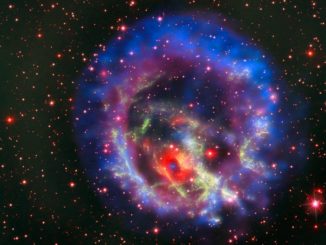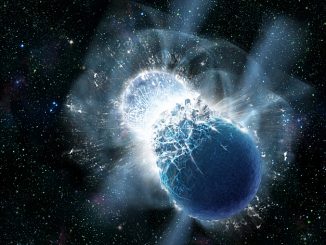
For the first time, astronomers have detected a fast radio burst, or FRB, in the Milky Way, a titanic outburst of X-rays and radio waves that was generated in a fraction of a second. Until now, FRBs were only seen in other galaxies and their sources were a mystery.
Now, astronomers at multiple institutions have pinpointed the FRB spotted in the Milky Way and conclude it most likely was generated by a magnetar, a super-magnetised neutron star with many times the mass of the Sun. The magnetic field generated by a magnetar can be a thousand times more intense than that of a typical neutron star.
While it’s not yet clear how the magnetar in question generated the observed outburst, researchers at least have identified a probable source.
“Before this event, a wide variety of scenarios could explain the origin of FRBs,” said Chris Bochenek, a doctoral student in astrophysics at Caltech who led one of several studies. “While there may still be exciting twists in the story of FRBs in the future, for me, right now, I think it’s fair to say that most FRBs come from magnetars until proven otherwise.”
The X-ray component of the outburst was detected by several satellites while the radio counterpart was discovered by the Canadian Hydrogen Intensity Mapping Experiment – CHIME – a radio telescope located at Dominion Radio Astrophysical Observatory in British Columbia and led by McGill University in Montreal, the University of British Columbia, and the University of Toronto.
Paul Scholz, a researcher at the University of Toronto’s Dunlap Institute for Astronomy & Astrophysics and a member of the CHIME/FRB collaboration, said astronomers have studied magnetars in the Milky way for decades, but “FRBs are an extragalactic phenomenon whose origins have been a mystery. This event shows that the two phenomena are likely connected.”
The magnetar in question is known as SGR 1935+2154, or SGR 1935 for short, located in the constellation Vulpecula. It is thought to be between 14,000 and 41,000 light years away. If near the lower end of that range, the X-rays from the outburst represented the energy generated by the Sun in a month.



